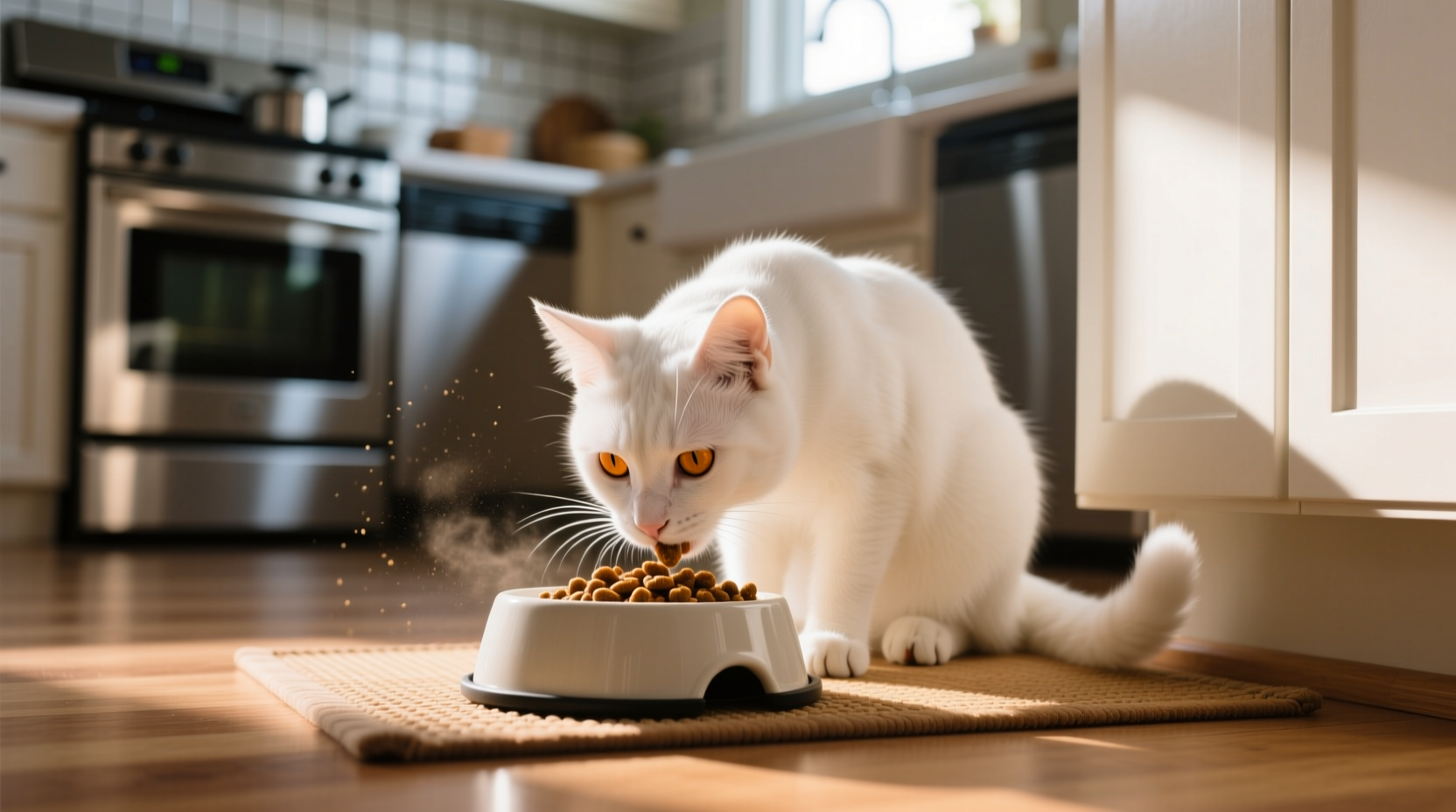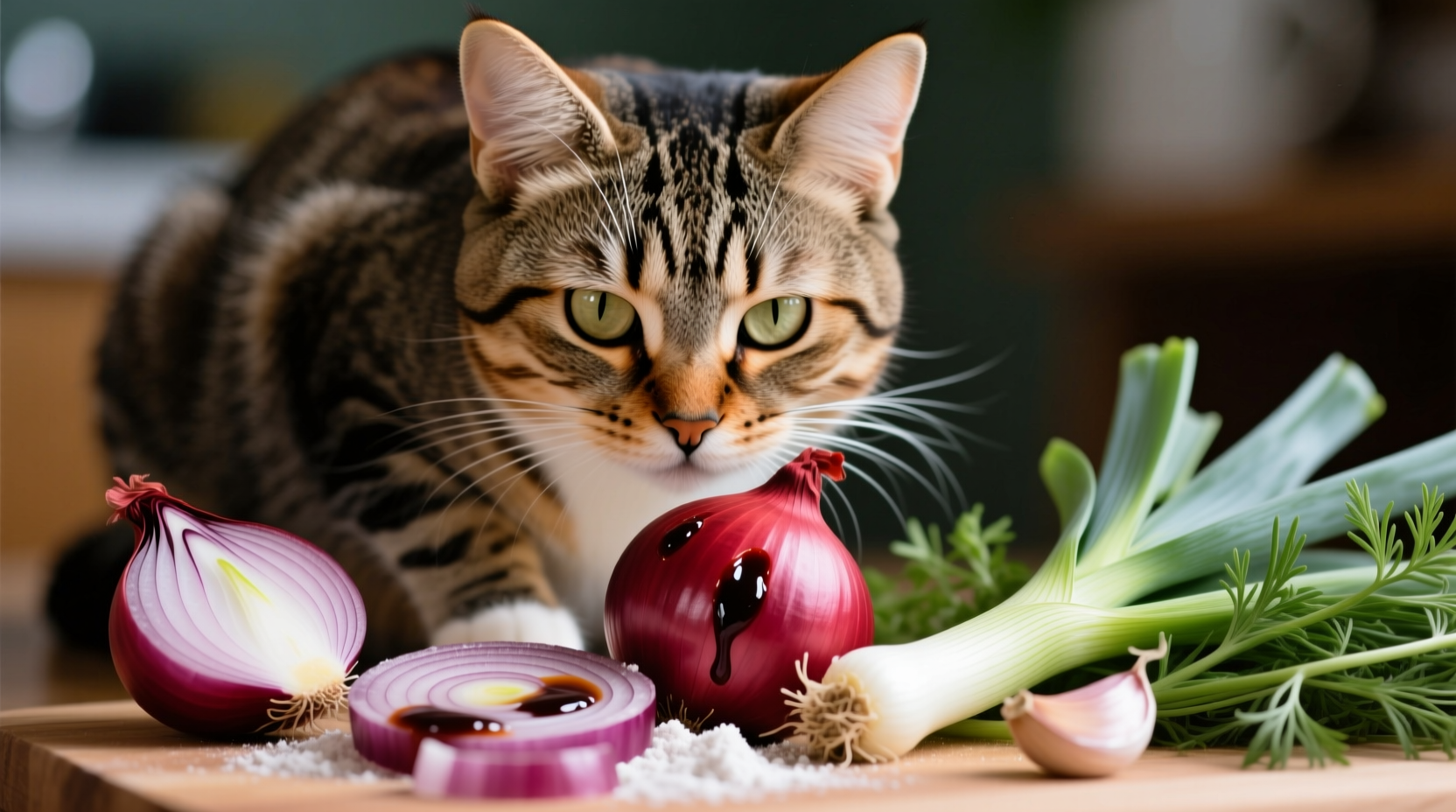If you've ever wondered whether it's safe to share your cooking scraps with your curious cat, the answer about onions is a definitive no. Understanding why onions are toxic to cats and recognizing the symptoms of onion poisoning in cats could save your pet's life. This comprehensive guide provides vet-verified information about onion toxicity in cats, including immediate action steps if your cat has ingested onions.
Why Onions Are Dangerous for Cats: The Science Behind the Toxicity
Onions contain a compound called N-propyl disulfide that causes oxidative damage to red blood cells in cats. Unlike humans, cats lack the necessary enzymes to break down this compound safely. When a cat consumes onions, this toxic substance binds to hemoglobin in red blood cells, causing them to rupture—a condition known as hemolytic anemia.
According to the ASPCA Animal Poison Control Center, all members of the Allium family (onions, garlic, leeks, chives, and shallots) are toxic to cats. The toxic principle affects cats' red blood cells much more severely than it does humans or even dogs.
Symptoms of Onion Poisoning in Cats: What to Watch For
Symptoms of onion toxicity may not appear immediately—often taking 1-4 days to manifest after ingestion. Early recognition is critical for effective treatment. Common signs include:
- Pale or bluish gums (indicating anemia)
- Weakness and lethargy
- Rapid breathing or panting
- Vomiting and diarrhea
- Red or brown urine (from hemoglobin)
- Loss of appetite
- Increased heart rate
| Onion Form | Dangerous Amount for Cats | Onset of Symptoms |
|---|---|---|
| Raw onion | 5g per kg of body weight | 1-4 days |
| Cooked onion | Same as raw (cooking doesn't reduce toxicity) | 1-4 days |
| Onion powder | As little as 0.5g per kg (more concentrated) | 1-4 days |
| Onion juice | Highly dangerous even in small drops | 1-4 days |
What to Do Immediately If Your Cat Ate Onions
If you suspect your cat has consumed onions, take these steps without delay:
- Remove any remaining onion from your cat's reach
- Contact your veterinarian immediately—don't wait for symptoms to appear
- Have the packaging or food item ready to show the vet what was consumed
- Do not induce vomiting unless specifically instructed by a professional
- Keep your cat calm and quiet to reduce oxygen demand
According to the Veterinary Partner, early intervention significantly improves outcomes. Treatment may include intravenous fluids, oxygen therapy, and in severe cases, blood transfusions.
How Much Onion Is Dangerous for Cats?
Many cat owners wonder how much onion is toxic to cats. The answer is concerning: even small amounts can be dangerous. Research shows that as little as 5 grams of onion per kilogram of body weight can cause toxicity. For an average 5kg (11lb) cat, that's just 25 grams—about one-fifth of a medium onion.
What's particularly dangerous is that onion powder is significantly more concentrated than fresh onion. A single teaspoon of onion powder contains the equivalent of an entire onion. Many commercial baby foods and human meal replacement products contain onion powder, making them unexpectedly hazardous for cats.
Other Allium Family Foods That Are Toxic to Cats
While onions pose the greatest risk, other members of the Allium family are equally dangerous:
- Garlic—actually more toxic than onions (5x more concentrated)
- Chives—both regular and Chinese varieties
- Leeks—often found in soups and stews
- Shallots—common in gourmet cooking
- Green onions/scallions—all parts are toxic
A common misconception is that cooking destroys the toxic compounds in onions. This is false—cooking does not reduce onion toxicity for cats. Whether raw, cooked, fried, or powdered, all forms remain dangerous.
Safe Flavor Alternatives for Cat Food
If you're preparing homemade food for your cat and want to add flavor, consider these safe alternatives:
- Low-sodium chicken or fish broth (without onions or garlic)
- Cooked plain pumpkin (not pie filling)
- Small amounts of cooked carrots
- Freeze-dried meat treats for flavor enhancement
- Catnip for variety
Always consult with a veterinary nutritionist before making significant changes to your cat's diet. When purchasing commercial cat food, check labels carefully for hidden onion or garlic powder, which sometimes appears in "natural flavors" ingredients.
Preventing Onion Exposure: Kitchen Safety for Cat Owners
Prevention is always better than treatment when it comes to onion poisoning in cats. Implement these safety measures:
- Store onions and garlic in closed cabinets, not in open bowls
- Dispose of onion scraps immediately in secured trash
- Avoid cooking with onions when your cat is nearby
- Educate all household members about the dangers
- Read pet food labels carefully for hidden onion derivatives
- Be cautious with human foods offered as treats
Remember that cats are curious by nature and may investigate your cooking. Keep your feline friends out of the kitchen during food preparation, especially when working with toxic ingredients.

When to Contact a Veterinarian Immediately
Don't wait for symptoms to appear if you know or suspect your cat has eaten onions. Contact your veterinarian or the Pet Poison Helpline (800-213-6680) immediately. Early intervention is critical—treatment within the first few hours can prevent serious complications.
Be prepared to provide details about what your cat consumed, how much, and when. This information helps veterinarians determine the appropriate course of action. Remember that onion toxicity in cats is time-sensitive—the sooner treatment begins, the better the outcome.











 浙公网安备
33010002000092号
浙公网安备
33010002000092号 浙B2-20120091-4
浙B2-20120091-4